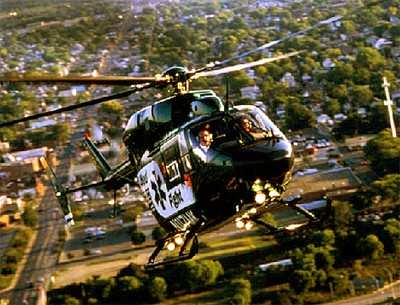Report Notes Increase In Accident Fatalities In Recent
Years.
 The NTSB earlier this
year held a four-day hearing focusing on the safety record of
Helicopter Emergency Medical Services. The 35-page report released
this week indicates that medical helicopter services provide a
valuable contribution to the medical community, but that the
overall safety record has declined in recent years.
The NTSB earlier this
year held a four-day hearing focusing on the safety record of
Helicopter Emergency Medical Services. The 35-page report released
this week indicates that medical helicopter services provide a
valuable contribution to the medical community, but that the
overall safety record has declined in recent years.
The goal of the hearing, according to the Helicopter Association
International online publication "Rotor News", was for the Safety
Board to learn more about HEMS operations, in order to better
evaluate the factors that contribute to accidents. The Board heard
from numerous witnesses who deal with all elements of HEMS
operations. The format of the hearing involved the questioning of
several panels. Forty-one witnesses were called, including
Helicopter Association International (HAI) President, Matt Zuccaro,
who is also Co-Chair of the International Helicopter Safety Team
(IHST), as well as representatives from the medical community,
emergency services companies, the FAA, and others.
In the summary of the report, the NTSB said "Helicopter
emergency medical systems (HEMS) provide an important service to
the public, transporting seriously ill patients or donor organs to
emergency care facilities. However, the number of accident
fatalities during HEMS operations has increased over the last
several years, raising questions about the safety of these
operations. From 2003 through 2008, 85 HEMS accidents claimed 77
lives, and 2008 was the deadliest year on record for HEMS
operations with 8 fatal accidents and 29 fatalities, up from 2
fatal accidents and 7 fatalities in 2007.1 This increase in
fatalities and fatal accidents brought HEMS operations to the
attention of Congress, the U.S. Government Accountability Office
(GAO), and the National Transportation Safety Board (NTSB), as well
as industry, the media, and the public. The Federal Aviation
Administration (FAA) also took notice, and in 2005, created a
“HEMS Task Force” after observing the spike in HEMS
accidents. The resulting FAA analysis of HEMS accidents identified
three primary safety concerns: inadvertent IMC encounters, night
operations, and CFIT. As a result, the FAA took many actions,
mostly to impose voluntary guidance, including issuance of FAA
Notice 8000.293."

File Photo
Among the findings are that HEMS operations in the United States
in 2008 involved more than 800 helicopters, and that HEMS
helicopters were involved in 264 accidents between 1972 and 2008.
Weather was a significant factor in 19% of those accidents.
Overall, however, The accident rate per 100,000 hours flown has
decreased slowly but steadily since 2003. This rate has been lower
than that for all helicopters and general aviation aircraft, but
the fatal crash rate per 100,000 hours rose markedly in 2008.
The report also looks into how medical
helicopter services are reimbursed, competition among emergency
service providers, and flight dispatch procedures. Testimony was
heard on safety equipment, training, corporate oversight, and
federal regulations.
No conclusions were offered by this report. This was the third
formal NTSB examination of HEMS. The previous hearings were held in
1998, and 2006.
 ANN's Daily Aero-Term (04.25.24): Airport Rotating Beacon
ANN's Daily Aero-Term (04.25.24): Airport Rotating Beacon ANN's Daily Aero-Linx (04.25.24)
ANN's Daily Aero-Linx (04.25.24) Klyde Morris (04.22.24)
Klyde Morris (04.22.24) Airborne 04.24.24: INTEGRAL E, Elixir USA, M700 RVSM
Airborne 04.24.24: INTEGRAL E, Elixir USA, M700 RVSM Airborne 04.22.24: Rotor X Worsens, Airport Fees 4 FNB?, USMC Drone Pilot
Airborne 04.22.24: Rotor X Worsens, Airport Fees 4 FNB?, USMC Drone Pilot




